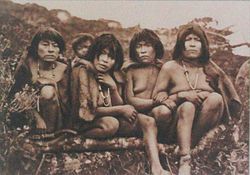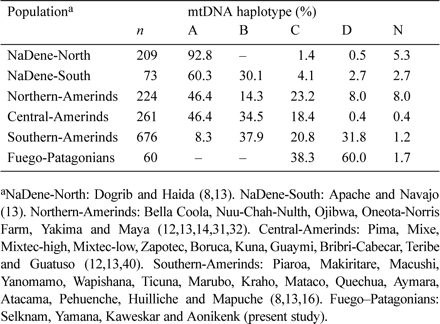| Online: | |
| Visits: | |
| Stories: |

| Story Views | |
| Now: | |
| Last Hour: | |
| Last 24 Hours: | |
| Total: | |
A Possible Reason Sasquatch Could Be Hiding So Vigorously
Note: What I am about to share is just one very possible reason the Sasquatch remain vehemently adamant that they not come in contact with our kind. It is, of course, not the only reason, but I will support my case with numerous examples –
This puzzle has vexed me for decades. Why? Why not just join us? Why not try trading? Why not just defect? How do they keep future generations towing the same line to remain commandos of the woods when it's obvious there's an easier way to live among the short hairless kind?
Let me begin this with some research I was doing on the Yaghan that gave me an “aha” moment that made it all fall into place.
The Yaghan tribe of the southern most part of the hemisphere at the tip of Portugal near Cape Horn are a good example of the theory I am about to propose. This tribe whose territory included the islands south of Tierra del Fuego, met a difficult fate.
The Yaghan were traditionally nomads, who were hunter-gatherers. They traveled by canoes between islands to collect food: the men hunted sea lions, while the women dove to collect shellfish (interestingly just like the Karankawa Indians of Coastal Texas).
They were also identified as the long-limbed, slope-headed Otamid type by Neumann who classified the ancient Americans by head shapes, dividing them into “first migration” and “second migration” (Otamids being first migration just like the Karankawa).
As a side note: Skulls found on the island of Tiera Del Fuego and Patagonia have found some interesting things on DNA:
…revealed complete absence of two of the four primary mito-chondrial haplotype groups present in contemporary Amerinds, namely A and B. In contrast, haplogroups C and D were found in all but one sample with frequencies of ∼38% and 60%. These results, together with the decreasing incidence of group A in more southerly latitudes in the American continent and the absence of cluster B above 55° North in America and Asia, argue that the first settlers entering America 21 000–14 000 years ago already lacked both mtDNA lineages. (SOURCE)
As intriguing as this is, it also states these indigenous peoples halotype does not relate to later migration people who came to America and are now referred to as Native Americans “All these indigenous peoples (Tiera Del Fuego/Patagonia area) were decimated upon contact with Europeans, leading to their virtual extinction between the turn of the XIX century and the early part of the XX.”
Even though the Yaghan people were not originally from this cold region at the bottom of the earth, they adapted excellently:
“The Yaghan may have been driven to this inhospitable area by enemies to the north (*sound familiar – like the Lenni Lenape driving the giants down the Mississippi, the Paiutes driving them into a cave and torching them, or the Cherokee driving off the Moon-Eyed people?*). They were famed for their complete indifference to the bitter weather around Cape Horn. Although they had fire and small domed shelters, they routinely went about completely naked in the frigid cold and biting wind of Tierra del Fuego (skull – Neumann Otamid). Women swam in its 48-degree-south waters hunting for shellfish. They often were observed to sleep in the open, completely unsheltered and unclothed, while Europeans shivered under blankets. A Chilean researcher claimed their average body temperature was warmer than a European's by at least one degree (sound like today's Sasquatch People, kinda?).
Fate of the Yaghan: “The Yaghan were decimated by the endemic infectious diseases carried by Westerners. The English established missions at Keppel Island in the Falklands, and Ushuaia on Tierra del Fuego, in an effort to teach the natives English, Christianity, and farming. The Yahgan suffered disruption of their habitat in the late 19th century when waves of immigrants came to the area for the gold rush and a boom in sheep farming. They did not understand the British concept of property, and were hunted down by ranchers' militias for the offense of “poaching” sheep in their former territories.
“In the 1920s some Yahgan were resettled on Keppel Island in the Falkland Islands in an attempt to preserve the tribe, as described by E. Lucas Bridges in Uttermost Part of the Earth (1948), but they continued to die off. The second-to-last full-blooded Yaghan, Emelinda Acuña, died in 2005. As of 2012, the last full-blooded Yahgan was “Abuela” (grandmother) Cristina Calderón, who lives in Chilean territory. She is the last native speaker of the Yahgan language.”
Fate of Ishi: He lived a few years before he succumbed to tuberculosis.
These two themes of disease and warring are repeated in the examples above and many more.
It's entirely possible that there was a time when the Sasquatch people (whatever their origins might be) came in contact with “others” who were not like them who brought disease and territorial war as they moved across the lands they had already settled.
This puzzle of Sasquatch's desire to remain hidden has bred a lot of stories of alien life forms, other dimensions and superpowers. It doesn't take superpowers to remain cloaked, but determination, adaptability (like the Yaghan) and perhaps larger cranial capacity.
**Tomorrow's post is a temporary diversion to fun – upcoming horror movie sequels – what's worth watching, what isn't!**
Source: http://www.ghosthuntingtheories.com/2014/04/a-possible-reason-sasquatch-could-be.html








I enjoyed your article, especially the acknowledgement of the ancient South American Indians who lost everything due to European occupation. Ishi and Yahu are both Hebrew names, the former meaning man and the latter meaning Father(Elohim).
This is an interesting theory about the sasquatch being so reticent. We have a confirmed sasquatch in our area living in a cave system. There are many people in the community who have heard his howling at night. The Native people are too superstitious to bother it and at the same time it is intimidating, stinky and secretive.